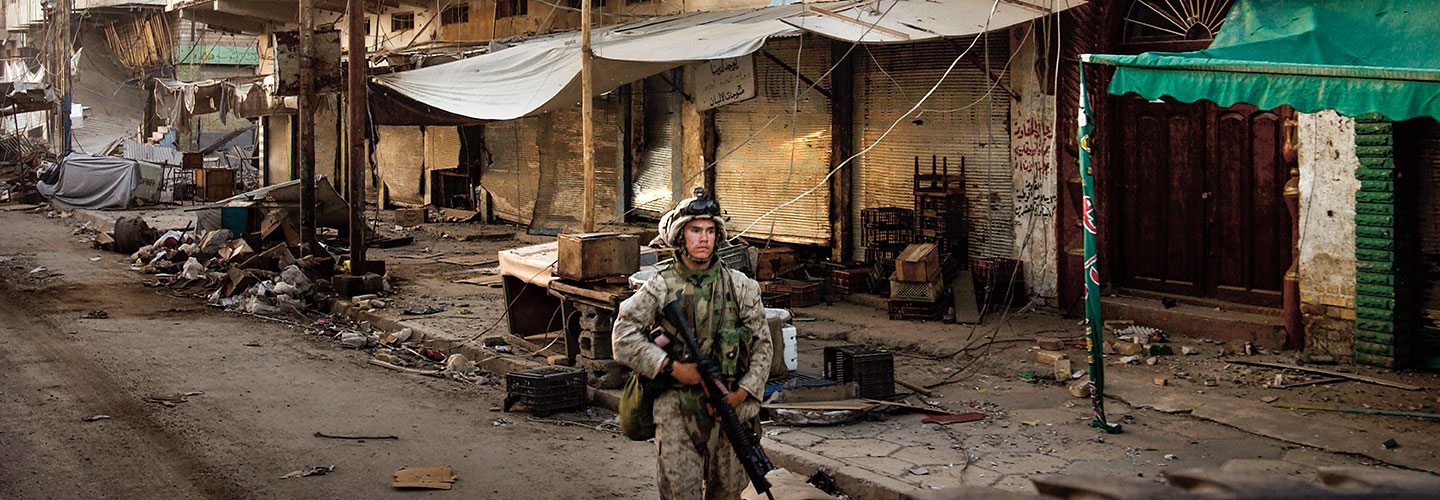AM: Were you ever caught in the midst of fighting?
AG: Yes, several times. Every day we would go out into the street to see where the U.S. had bombed. When I was embedded with the Marines for the siege of Fallujah,** we crawled through the streets while under fire. I survived. Not everyone did. A Marine next to me was shot.
AM: Looking back, were you in Iraq too long?
AG: I definitely was in Iraq much too long. After the invasion and a trip home, I was not sure I would return. [While reporting] I got to the point where I could not sleep and had trouble facing another day. What drove me to keep going back was that I wanted to know how everything would turn out.
AM: Describe what you learned from being in such a war-torn country.
AG: I learned about myself. I also learned that we as a nation do not pay attention to history. [I don’t think we should] have gone into Iraq the way we did. [I believe] the U.S. was not prepared to be an occupying force in the absence of any government [there].
**The siege of Fallujah in late 2004 is considered the war’s bloodiest battle.
Editor’s Note: Anne Garrels worked as an NPR correspondent for 23 years. Although she is retired from the field, she continues to contribute commentary to the network’s news programs.
Hussein was finally captured in December 2003. He was later tried by an Iraqi court and executed in 2006.
In 2005, with U.S. support, Iraq had its first successful elections. But the country has continued to suffer from waves of political instability and violence. In 2011, the U.S. withdrew most of its troops. Yet the rise of a terrorist group called the Islamic State, or ISIS, caused the U.S. to send forces back in 2014. While ISIS has since been largely defeated, the approximately 2,500 American service members who remain in Iraq continue to be a target of attacks.
Says Alanna: “From interviewing Anne Garrels, I learned how Saddam Hussein ruled over people’s lives, making sure nobody spoke against him. Nobody had a right to speak freely when he was in power. I also learned how harsh war is on the civilians living in a country under attack.”
Note: This is an edited version of Alanna’s interview.

